The Importance of Work and Safety Clothing: Ensuring Employee Well-being and Productivity Introduction: Work and safety clothing play a crucial role in ensuring the well-being and productivity of employees across different industries. This summary will explore the significance of providing proper protective clothing to workers, the types of workwear available for various job roles, and the benefits that come with implementing appropriate safety measures within the workplace. 1. Why Work and Safety Clothing Matter: a. Promoting Workplace Safety: – Protective clothing acts as a barrier against potential hazards, including chemical spills, electrical accidents, excessive heat/cold, and physical injuries. – By providing employees with the necessary protective gear, employers demonstrate their commitment to creating a safe work environment, reducing the risk of accidents or injuries. b. Compliance with Legal and Regulatory Standards: – Governments and regulatory bodies often establish specific standards and guidelines regarding the use of workwear and safety gear in different industries. – By conforming to these regulations, organizations protect themselves against legal repercussions and show their commitment to maintaining safety and health standards. c. Enhancing Employee Confidence and Well-being: – Providing appropriate clothing and protective gear reassures employees that their employer prioritizes their safety. – When workers feel safe and supported, their confidence and morale improve, leading to increased job satisfaction, productivity, and overall well-being. 2. Types of Work and Safety Clothing: a. Protective Clothing:
safety ware
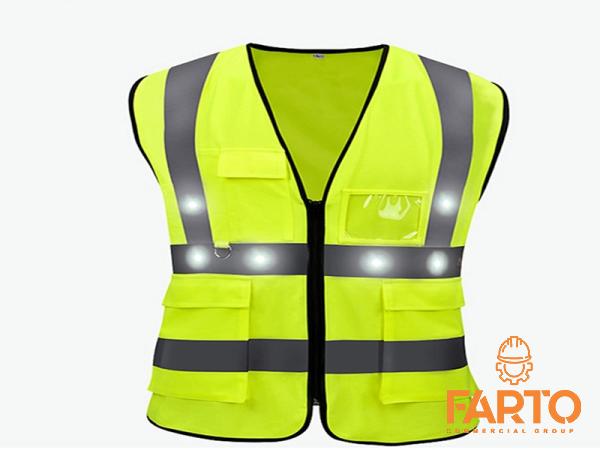 – Protective clothing is designed to shield workers from physical, chemical, biological, or thermal hazards commonly encountered in their specific work environment. – Examples include coveralls, high-visibility vests, flame-resistant clothing, hazmat suits, and chemical-resistant gloves. b. High-Visibility Clothing: – High-visibility clothing is crucial for workers who operate in environments with low visibility or high traffic areas to improve their visibility and reduce the risk of accidents. – This type of clothing often includes reflective strips, bright colors, and fluorescent materials to enhance visibility during both daytime and nighttime work activities. c. Personal Protective Equipment (PPE): – PPE refers to equipment designed to protect workers from specific hazards that cannot be eliminated through engineering controls alone. – Common examples include safety helmets, protective eyewear, masks, gloves, earplugs, and respirators. d. Footwear: – Proper work footwear is essential to prevent slips, trips, and falls, as well as reducing the risk of various foot injuries. – Industries such as construction, manufacturing, and healthcare often require employees to wear steel-toed boots, anti-slip shoes, or specialized footwear for protection against heavy objects, chemical spills, and electrical hazards. 3. Benefits of Implementing Appropriate Safety Measures: a. Reduced Workplace Injuries and Illnesses: – Implementing proper work and safety clothing significantly reduces the possibility of workplace accidents, injuries, and illnesses. – As a result, organizations can lower their lost productivity, medical costs, and potential workers’ compensation claims. b. Improved Productivity and Efficiency: – When employees feel secure and protected, they can focus on their tasks without distractions or concerns about their safety. – Properly equipped and confident workers tend to be more productive, leading to enhanced efficiency in completing tasks and meeting deadlines. c. Enhanced Company Reputation: – Companies that prioritize workplace safety, including providing appropriate workwear, are viewed favorably by employees, customers, and the public. – Demonstrating a commitment to employee well-being improves the overall reputation of the organization, attracting top talent, and potentially forging better business relationships. d. Legal Compliance and Avoidance of Penalties:
– Protective clothing is designed to shield workers from physical, chemical, biological, or thermal hazards commonly encountered in their specific work environment. – Examples include coveralls, high-visibility vests, flame-resistant clothing, hazmat suits, and chemical-resistant gloves. b. High-Visibility Clothing: – High-visibility clothing is crucial for workers who operate in environments with low visibility or high traffic areas to improve their visibility and reduce the risk of accidents. – This type of clothing often includes reflective strips, bright colors, and fluorescent materials to enhance visibility during both daytime and nighttime work activities. c. Personal Protective Equipment (PPE): – PPE refers to equipment designed to protect workers from specific hazards that cannot be eliminated through engineering controls alone. – Common examples include safety helmets, protective eyewear, masks, gloves, earplugs, and respirators. d. Footwear: – Proper work footwear is essential to prevent slips, trips, and falls, as well as reducing the risk of various foot injuries. – Industries such as construction, manufacturing, and healthcare often require employees to wear steel-toed boots, anti-slip shoes, or specialized footwear for protection against heavy objects, chemical spills, and electrical hazards. 3. Benefits of Implementing Appropriate Safety Measures: a. Reduced Workplace Injuries and Illnesses: – Implementing proper work and safety clothing significantly reduces the possibility of workplace accidents, injuries, and illnesses. – As a result, organizations can lower their lost productivity, medical costs, and potential workers’ compensation claims. b. Improved Productivity and Efficiency: – When employees feel secure and protected, they can focus on their tasks without distractions or concerns about their safety. – Properly equipped and confident workers tend to be more productive, leading to enhanced efficiency in completing tasks and meeting deadlines. c. Enhanced Company Reputation: – Companies that prioritize workplace safety, including providing appropriate workwear, are viewed favorably by employees, customers, and the public. – Demonstrating a commitment to employee well-being improves the overall reputation of the organization, attracting top talent, and potentially forging better business relationships. d. Legal Compliance and Avoidance of Penalties:
Specifications of safety ware
 – Complying with legal and regulatory standards helps organizations avoid penalties, lawsuits, and potential damage to their reputation. – By proactively implementing appropriate safety measures, including providing adequate work and safety clothing, businesses can ensure they are operating within legal boundaries. Conclusion: Work and safety clothing are critical elements in maintaining a safe and productive work environment. Employers should prioritize the well-being of their employees by providing the necessary protective gear and complying with relevant regulatory standards. The benefits of proper workwear range from reducing workplace injuries and illnesses to enhancing productivity, efficiency, and overall company reputation. By taking proactive measures to protect their workforce, organizations create a culture of safety that leads to increased job satisfaction, minimized risks, and improved business outcomes.1. Providing Quality Work and Safety Clothing: A Smart Investment for Businesses Ensuring the safety and well-being of employees should be a top priority for any business. One effective way to achieve this is by providing quality work and safety clothing. While it may initially seem like an additional cost, investing in proper protective gear is a smart long-term strategy that can yield significant benefits for businesses. By providing employees with appropriate work and safety clothing, businesses demonstrate their commitment to creating a safe work environment. This fosters a positive company culture, where employees feel valued, cared for, and motivated to perform their best. It also helps build trust between the employer and the workforce, leading to higher employee retention rates. Moreover, having the necessary protective gear prevents workplace accidents and injuries. This not only safeguards employees from harm but also reduces lost productivity due to sick leaves, medical appointments, and recovery time. By minimizing interruptions caused by accidents, businesses can maintain smooth operations and meet deadlines efficiently, resulting in improved productivity and profitability. 2. Compliance with Legal and Regulatory Standards: Avoiding Penalties and Lawsuits In addition to safeguarding employees, providing work and safety clothing helps businesses comply with legal and regulatory standards. Governments and regulatory bodies often establish specific guidelines regarding the use of protective gear in various industries. Failure to meet these requirements can lead to penalties, lawsuits, and damage to a company’s reputation. By staying up-to-date with industry regulations and implementing appropriate safety measures, businesses can avoid legal repercussions. This demonstrates a commitment to ensuring the well-being of employees and fostering a culture of compliance, which can positively impact the company’s image and reputation. 3. Choosing the Right Work and Safety Clothing: Customization for Job Roles Every industry has specific hazards and risks associated with different job roles. Therefore, it is essential to select work and safety clothing based on these unique requirements. Taking the time to assess the potential hazards faced by employees enables businesses to provide tailored protective clothing that offers the necessary protection and comfort. For instance, employees working in construction may require high-visibility vests to enhance visibility and prevent accidents on busy job sites. Those working with chemicals may need chemical-resistant gloves and hazmat suits. Electricians and technicians might require flame-resistant clothing to protect against electrical arcing or flash fires. By customizing workwear to the job roles, businesses ensure optimal safety and minimize risks. 4. Importance of High-Visibility Clothing: Reducing Accidents in Low-Visibility Environments High-visibility clothing plays a crucial role in industries where workers operate in low-visibility environments or high-traffic areas. These garments often feature reflective strips, bright colors, and fluorescent materials, making employees more visible to their surroundings. This significantly reduces the risk of accidents and increases overall safety in the workplace. Industries such as construction, transportation, and road maintenance greatly benefit from the use of high-visibility clothing. It enables workers to be easily seen by drivers, machinery operators, and other personnel, even in adverse weather conditions and low-light situations. Employers should ensure that workers in such environments are equipped with the appropriate high-visibility clothing to minimize the likelihood of accidents and injuries. 5. Personal Protective Equipment (PPE):
– Complying with legal and regulatory standards helps organizations avoid penalties, lawsuits, and potential damage to their reputation. – By proactively implementing appropriate safety measures, including providing adequate work and safety clothing, businesses can ensure they are operating within legal boundaries. Conclusion: Work and safety clothing are critical elements in maintaining a safe and productive work environment. Employers should prioritize the well-being of their employees by providing the necessary protective gear and complying with relevant regulatory standards. The benefits of proper workwear range from reducing workplace injuries and illnesses to enhancing productivity, efficiency, and overall company reputation. By taking proactive measures to protect their workforce, organizations create a culture of safety that leads to increased job satisfaction, minimized risks, and improved business outcomes.1. Providing Quality Work and Safety Clothing: A Smart Investment for Businesses Ensuring the safety and well-being of employees should be a top priority for any business. One effective way to achieve this is by providing quality work and safety clothing. While it may initially seem like an additional cost, investing in proper protective gear is a smart long-term strategy that can yield significant benefits for businesses. By providing employees with appropriate work and safety clothing, businesses demonstrate their commitment to creating a safe work environment. This fosters a positive company culture, where employees feel valued, cared for, and motivated to perform their best. It also helps build trust between the employer and the workforce, leading to higher employee retention rates. Moreover, having the necessary protective gear prevents workplace accidents and injuries. This not only safeguards employees from harm but also reduces lost productivity due to sick leaves, medical appointments, and recovery time. By minimizing interruptions caused by accidents, businesses can maintain smooth operations and meet deadlines efficiently, resulting in improved productivity and profitability. 2. Compliance with Legal and Regulatory Standards: Avoiding Penalties and Lawsuits In addition to safeguarding employees, providing work and safety clothing helps businesses comply with legal and regulatory standards. Governments and regulatory bodies often establish specific guidelines regarding the use of protective gear in various industries. Failure to meet these requirements can lead to penalties, lawsuits, and damage to a company’s reputation. By staying up-to-date with industry regulations and implementing appropriate safety measures, businesses can avoid legal repercussions. This demonstrates a commitment to ensuring the well-being of employees and fostering a culture of compliance, which can positively impact the company’s image and reputation. 3. Choosing the Right Work and Safety Clothing: Customization for Job Roles Every industry has specific hazards and risks associated with different job roles. Therefore, it is essential to select work and safety clothing based on these unique requirements. Taking the time to assess the potential hazards faced by employees enables businesses to provide tailored protective clothing that offers the necessary protection and comfort. For instance, employees working in construction may require high-visibility vests to enhance visibility and prevent accidents on busy job sites. Those working with chemicals may need chemical-resistant gloves and hazmat suits. Electricians and technicians might require flame-resistant clothing to protect against electrical arcing or flash fires. By customizing workwear to the job roles, businesses ensure optimal safety and minimize risks. 4. Importance of High-Visibility Clothing: Reducing Accidents in Low-Visibility Environments High-visibility clothing plays a crucial role in industries where workers operate in low-visibility environments or high-traffic areas. These garments often feature reflective strips, bright colors, and fluorescent materials, making employees more visible to their surroundings. This significantly reduces the risk of accidents and increases overall safety in the workplace. Industries such as construction, transportation, and road maintenance greatly benefit from the use of high-visibility clothing. It enables workers to be easily seen by drivers, machinery operators, and other personnel, even in adverse weather conditions and low-light situations. Employers should ensure that workers in such environments are equipped with the appropriate high-visibility clothing to minimize the likelihood of accidents and injuries. 5. Personal Protective Equipment (PPE):
buy safety ware
 A Comprehensive Approach to Safety While work and safety clothing encompass various garments, personal protective equipment (PPE) plays a vital role in ensuring comprehensive safety measures. PPE refers to equipment explicitly designed to protect workers from specific hazards that cannot be eliminated through engineering controls alone. Industries such as healthcare, manufacturing, and construction commonly utilize PPE, which includes items like safety helmets, protective eyewear, masks, gloves, earplugs, and respirators. Each piece of PPE serves a specific purpose in safeguarding workers from potential risks associated with their job tasks. Employers should assess the specific needs of their employees and provide them with the appropriate PPE to ensure their safety and well-being. 6. Ensuring Foot Safety: Importance of Proper Work Footwear Foot injuries are common in many industries, including construction, manufacturing, and healthcare. To prevent slips, trips, and falls, as well as protect against various foot injuries, businesses must prioritize proper work footwear. Unsuitable or inadequate footwear can lead to accidents and potentially severe injuries. Steel-toed boots are often essential for workers in construction and industrial settings, as they provide protection against heavy objects, impacts, and compression. Anti-slip shoes, designed with specialized sole patterns, minimize the risk of slips and falls on slippery surfaces. Industries involving exposure to chemicals or electrical hazards may require specific footwear that meets the necessary safety standards. By investing in the appropriate work footwear, businesses can ensure the safety and well-being of their employees. 7. Training and Education: Maximizing the Benefits of Work and Safety Clothing Providing work and safety clothing to employees is only effective if they are properly trained in its use and maintenance. Conducting regular training sessions and workshops on the importance of protective gear, how to use it correctly, and how to identify signs of wear and tear helps maximize the benefits of these garments. Training should cover topics such as selecting the right size and fit, conducting visual inspections, cleaning and storing clothing correctly, and reporting damaged or malfunctioning equipment. Engaging employees in continuous education about work and safety clothing ensures that they remain updated on best practices, enabling them to make the most of these protective measures. 8. Conducting Regular Risk Assessments: Identifying and Addressing Hazards To effectively implement work and safety clothing measures, businesses should conduct regular risk assessments.
A Comprehensive Approach to Safety While work and safety clothing encompass various garments, personal protective equipment (PPE) plays a vital role in ensuring comprehensive safety measures. PPE refers to equipment explicitly designed to protect workers from specific hazards that cannot be eliminated through engineering controls alone. Industries such as healthcare, manufacturing, and construction commonly utilize PPE, which includes items like safety helmets, protective eyewear, masks, gloves, earplugs, and respirators. Each piece of PPE serves a specific purpose in safeguarding workers from potential risks associated with their job tasks. Employers should assess the specific needs of their employees and provide them with the appropriate PPE to ensure their safety and well-being. 6. Ensuring Foot Safety: Importance of Proper Work Footwear Foot injuries are common in many industries, including construction, manufacturing, and healthcare. To prevent slips, trips, and falls, as well as protect against various foot injuries, businesses must prioritize proper work footwear. Unsuitable or inadequate footwear can lead to accidents and potentially severe injuries. Steel-toed boots are often essential for workers in construction and industrial settings, as they provide protection against heavy objects, impacts, and compression. Anti-slip shoes, designed with specialized sole patterns, minimize the risk of slips and falls on slippery surfaces. Industries involving exposure to chemicals or electrical hazards may require specific footwear that meets the necessary safety standards. By investing in the appropriate work footwear, businesses can ensure the safety and well-being of their employees. 7. Training and Education: Maximizing the Benefits of Work and Safety Clothing Providing work and safety clothing to employees is only effective if they are properly trained in its use and maintenance. Conducting regular training sessions and workshops on the importance of protective gear, how to use it correctly, and how to identify signs of wear and tear helps maximize the benefits of these garments. Training should cover topics such as selecting the right size and fit, conducting visual inspections, cleaning and storing clothing correctly, and reporting damaged or malfunctioning equipment. Engaging employees in continuous education about work and safety clothing ensures that they remain updated on best practices, enabling them to make the most of these protective measures. 8. Conducting Regular Risk Assessments: Identifying and Addressing Hazards To effectively implement work and safety clothing measures, businesses should conduct regular risk assessments.
safety ware + buy and sell
 By identifying potential hazards in the workplace, employers can address them proactively, selecting the appropriate protective gear and implementing necessary safety measures. Risk assessments should be conducted in collaboration with employees and should consider factors such as the nature of the work, equipment used, potential exposure to hazardous substances, and ergonomic considerations. This process allows businesses to develop tailored strategies to mitigate risks and ensure the proper use of work and safety clothing. 9. Collaboration with Suppliers and Manufacturers: Ensuring Quality and Innovation Effective communication and collaboration with suppliers and manufacturers are crucial in providing quality work and safety clothing. Businesses should establish partnerships with reliable and reputable suppliers who understand their industry-specific requirements and can offer innovative and high-quality solutions. Engaging in ongoing discussions with suppliers allows businesses to stay informed about the latest advancements in workwear technology and emerging safety standards. Regularly reviewing partnerships and exploring new options ensures that employers have access to the most effective and up-to-date work and safety clothing for their employees. 10. Continuous Improvement: Regular Evaluation and Feedback The field of work and safety clothing is constantly evolving, with new materials, designs, and technologies emerging regularly. To maximize the effectiveness of protective gear and ensure employee safety, businesses must continuously evaluate their existing practices and seek feedback from employees. Regularly reviewing the effectiveness of work and safety clothing, as well as their overall safety strategies, allows businesses to identify areas for improvement and make necessary adjustments. Listening to employee feedback, concerns, and suggestions helps create a collaborative workplace culture that prioritizes safety and well-being. Conclusion: Work and safety clothing are crucial investments for businesses across industries. By providing employees with proper protective gear, businesses ensure the safety and well-being of their workforce, comply with legal requirements, and enhance overall productivity. Customizing workwear, implementing high-visibility clothing, utilizing personal protective equipment, and prioritizing foot safety are essential aspects of a comprehensive safety strategy. Regular training, risk assessments, collaboration with suppliers, and continuous improvement further strengthen the effectiveness of work and safety clothing measures. By prioritizing employee safety, businesses can create a positive and productive work environment, paving the way to long-term success.
By identifying potential hazards in the workplace, employers can address them proactively, selecting the appropriate protective gear and implementing necessary safety measures. Risk assessments should be conducted in collaboration with employees and should consider factors such as the nature of the work, equipment used, potential exposure to hazardous substances, and ergonomic considerations. This process allows businesses to develop tailored strategies to mitigate risks and ensure the proper use of work and safety clothing. 9. Collaboration with Suppliers and Manufacturers: Ensuring Quality and Innovation Effective communication and collaboration with suppliers and manufacturers are crucial in providing quality work and safety clothing. Businesses should establish partnerships with reliable and reputable suppliers who understand their industry-specific requirements and can offer innovative and high-quality solutions. Engaging in ongoing discussions with suppliers allows businesses to stay informed about the latest advancements in workwear technology and emerging safety standards. Regularly reviewing partnerships and exploring new options ensures that employers have access to the most effective and up-to-date work and safety clothing for their employees. 10. Continuous Improvement: Regular Evaluation and Feedback The field of work and safety clothing is constantly evolving, with new materials, designs, and technologies emerging regularly. To maximize the effectiveness of protective gear and ensure employee safety, businesses must continuously evaluate their existing practices and seek feedback from employees. Regularly reviewing the effectiveness of work and safety clothing, as well as their overall safety strategies, allows businesses to identify areas for improvement and make necessary adjustments. Listening to employee feedback, concerns, and suggestions helps create a collaborative workplace culture that prioritizes safety and well-being. Conclusion: Work and safety clothing are crucial investments for businesses across industries. By providing employees with proper protective gear, businesses ensure the safety and well-being of their workforce, comply with legal requirements, and enhance overall productivity. Customizing workwear, implementing high-visibility clothing, utilizing personal protective equipment, and prioritizing foot safety are essential aspects of a comprehensive safety strategy. Regular training, risk assessments, collaboration with suppliers, and continuous improvement further strengthen the effectiveness of work and safety clothing measures. By prioritizing employee safety, businesses can create a positive and productive work environment, paving the way to long-term success.




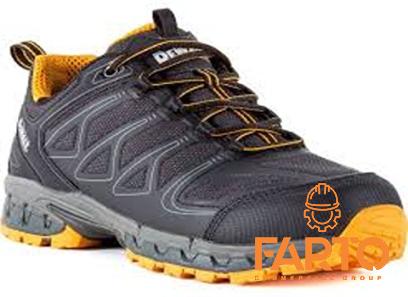



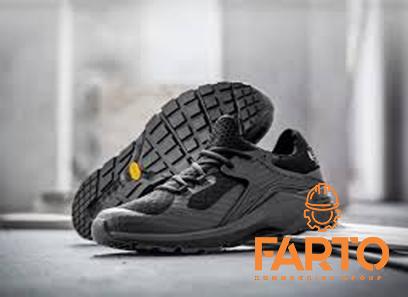
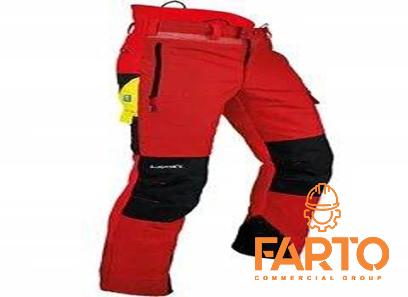
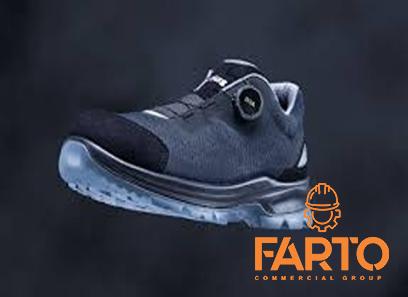
Your comment submitted.